Motorola Droid RAZR Review - A Better Clad Bionic
by Brian Klug on December 16, 2011 2:01 AM EST- Posted in
- Smartphones
- Droid
- LTE
- 4G
- Motorola
- Android
- Mobile
- Droid RAZR
- motorola droid RAZR
Lapdock 100 and Accessories
For some reason, even though I’ve touched nearly all the Motorola Droids at some point or another, I’ve never managed to actually sit down and use one of the laptop docks. Sure, I poked at the Atrix lapdock for a little while back when that came out, but never really got the chance to experiment and try to fit it into my workflow.
This time we’ve got the Lapdock 100 which is compatible with virtually all of the newer laptop-dock enabled phones, including the RAZR, Atrix 2, Bionic, Electrify, and Photon 4G. That list is essentially all of the devices that ship with the webtop application installed with the exception of the Atrix. I didn’t realize it, but the older Atrix laptop dock is incompatible with these newer devices owing to the microHDMI and microUSB ports being position swapped.
In case Motorola’s lapdock concept is one that you haven’t been introduced to yet, the idea is to use the smartphone SoC in conjunction with some virtualization (called the Webtop Application) to drive a Linux desktop environment and a few applications on a larger canvas. The laptop dock doesn’t include much more than peripherals (keyboard and trackpad), a display, and battery - everything else really is running on the attached device. The smartphone display then becomes a window which you can interact with alongside desktop Firefox or a few other bundled applications. Running applications become tabs at the top of the smartphone window pane, and the android navigational buttons are at the bottom.
Firefox on the laptop dock includes Adobe Flash 10.1 as well, and although the version of Firefox running on the laptop dock isn’t bleeding edge at 6.0.2, it’s still a big step forwards from the Android 2.3 browser.
The Lapdock 100 includes a 10.1” 1366x768 display, internal battery for powering the device and the dock, a flexible connector for attaching to compatible phones, two USB ports, trackpad, and a netbook sized QWERTY keyboard with a few positional oddities but overall pretty responsive key domes. The only real issue I have with the keyboard is that the “,./” trio of keys at the right are compressed into a smaller than normal space to accommodate the arrow keys at far right. This is sort of standard netbook fare, although that’s to be expected considering the display’s 10.1” size.
The trackpad is probably the only major frustration I had with the Lapdock 100. I found it difficult to trigger the scroll gesture and instead resorted to using page up and page down for navigation, and it’s also easy to sometimes confuse right and left clicking since the buttons aren’t discrete but rather part of the trackpad area.
The big selling point for the Lapdock 100 (and the upcoming 500 Pro) over either the Bionic or Atrix docks is that they’re compatible with more than just one device, and future devices as well. On the Lapdock 100 instead of really getting a dock, there’s a rubberized flexible connector, and the phone then rests inside a rubberized pocket. I still had the Bionic kicking around and tried it with the Lapdock 100 in conjunction with the RAZR and sure enough things work perfectly. The only odd part about using the dock with the RAZR is that the cable isn’t quite long enough for it to lay horizontally in the rubberized area, instead the only way I could fit it in was vertically.
The Lapdock UI looks like what you’d get if you crossed motoblur with a linux desktop. There are some dock-like shortcuts at bottom, a status bar which mirrors Android’s status bar at the top, and the usual sort of window controls. I find myself wishing that Motorola would expose a developer mode and allow for a native shell inside the webtop application beyond just Firefox.
Unfortunately at this point the only webtop application types are really what ship with the device, what exist inside the Android mobile view, or HTML5 web apps which run inside Firefox, and there’s explicit mention of no shell access.
I mentioned the USB ports previously - these can be used in conjunction with any standard USB HID keyboard, mouse, or headset. In addition if a USB mass storage device is attached, it is automatically mounted and storage is visible to the webtop file manager application and to android as “usbdisk_1.3/” or similar depending on the device (as opposed to sdcard/ and sdcard-ext/ for those volumes).
There’s also the ability to print from the Lapdock using built-in CUPS over the network, which I tested with two Brother and Samsung network printers. The settings panes provide all the basic functionality you need to print, and Firefox likewise lets you shoot jobs over just fine.
The lapdock’s size makes it feel a lot like a netbook in the hands. The only place where it’s a bit clumsy is in the weight and balance department; nearly all the weight and thickness on the lapdock is at the back quarter presumably where the battery is. That makes it a bit weird to balance on your knees or hold with one hand compared to an ordinary notebook or netbook.
The lapdock is a good compliment to any of the compatible smartphones if nothing else because it’ll simultaneously charge the phone and give you a much bigger display to play around on. That said, there’s much more functionality that could be unlocked here were more open development (and not HTML5 webapps) enabled. Of course, the other thing is that the lapdock lets you essentially use a desktop browser without resorting to paying tethering fees or using a third party application. It’s cheaper at $249 (as of this writing) than the Chromebooks (which hover between $350 and $450) which subjectively offer the similar level of occasionally sluggish browsing performance.


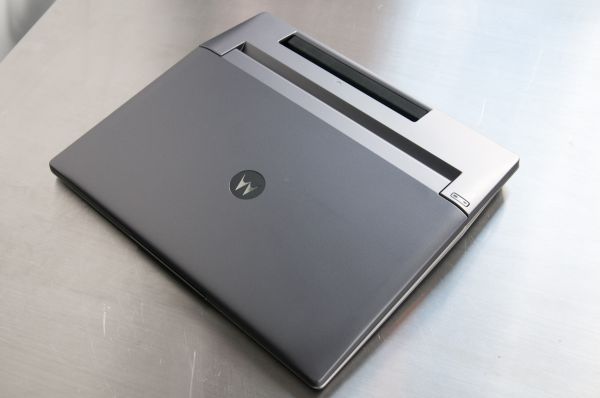


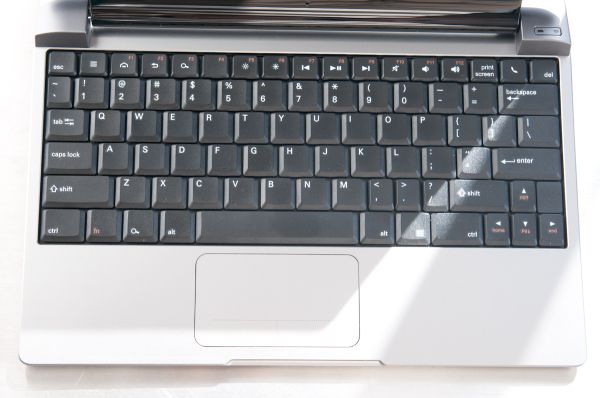
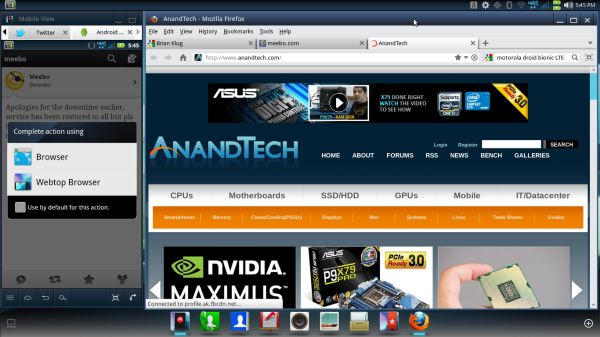
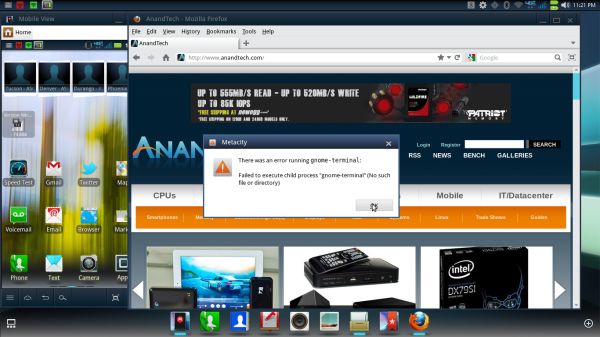
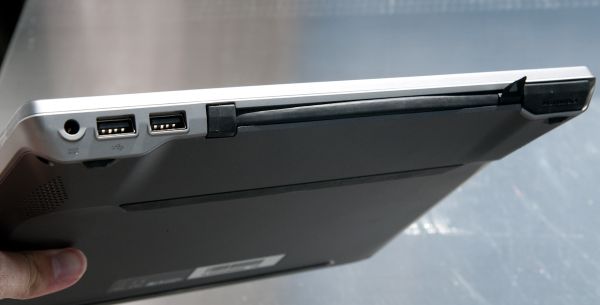















76 Comments
View All Comments
secretmanofagent - Friday, December 16, 2011 - link
Brian, have you seen any data connectivity issues that plague the Droid Bionic on the RAZR? It was something Verizon confirmed was a known issue (there was a patch released yesterday but don't know if that addressed that issue) and was happening to me quite frequently. I managed to move from the Bionic to the RAZR because of Verizon, and I've seen some hiccups that looked similar to the Bionic issue (it's the same LTE and CDMA baseband).flyfishin69 - Sunday, December 18, 2011 - link
I to am an (almost) former owner of the Bionic. The phone will loose all cellular data after coming in contact with 4g and trying to negotiate back to 3g. And especially in the Hagerstown Md. Area where verizon has no 3g service only 4. I would always find the bionic lifeless. I spoke with a verizon rep and he is sending my Razr tomm. Are we seeing these same problems in the Razr?Nfarce - Sunday, December 18, 2011 - link
Hmmm. I have had the Bionic for three months, since it first came out, and never had a single issue. Here in the greater metro Atlanta area I go between 4G and 3G all the time depending on how far outside the city. I have roamed all over the Southeast while driving and never had a problem either.Sounds to me like you just got a lemon.
secretmanofagent - Monday, December 19, 2011 - link
Nope, they weren't lemons. Check out Verizon's update:http://www.droid-life.com/2011/12/08/droid-bionic-...
Big one is "Improved stability of data connections on 3G and 4G". Worst part for those who still have it: Verizon says it will "help alleviate" the problem.
You're only one of three people that I know of who have said they weren't affected, out of about 10-15. Consider yourself lucky.
Nfarce - Tuesday, December 20, 2011 - link
Yes I guess I was lucky. I actually had no idea this update was even coming until trying to make a call Thursday evening last week. About the only gripe I had of the phone was the crappy autofocus problem. It seems to be a lot better now. I surmise the 3G/4G issue depended at least to some extent what region of the nation you lived in. Two co-workers have the phone (one got a RAZR and gave the Bionic to his wife) and neither reported problems either.secretmanofagent - Monday, December 19, 2011 - link
I've seen a couple times like what I had seen with the Bionic, but only momentary losses.loribeth - Tuesday, December 27, 2011 - link
Both 4G and 3G data drops for me. I live 30 miles north of Indy, which is 3G, but work in 4G territory. The upgrade has not helped and only created other buggy issues.LoneWolf15 - Friday, December 16, 2011 - link
I just did a lot of research before picking up a phone this week. The RAZR was among the half a dozen smartphones I considered --until I picked it up.I have relatively large hands with long fingers, and the phone is STILL too wide to comfortably hold in the hand. It's actually wider than the Droid Bionic (which I did purchase), and its relative thin-ness makes it less comfortable in the hand rather than more. Making a slightly thicker phone, and using that extra thickness to increase battery size would have actually made it more comfortable.
Of course, that would make the phone a Droid Bionic. Which is now $100 cheaper due to the RAZR coming out, so you can save $100 and get a phone that's every bit as capable, with more battery options. They also released a major update to the Bionic this week that squashed a ton of bugs.
At the $299 price, I'd probably look at the Galaxy Nexus or the HTC Rezound --not the RAZR. The Bionic is a much better value if you want a Motorola phone. So far, I'm happy with mine.
Nfarce - Sunday, December 18, 2011 - link
Yep, I like the feel of the Bionic more than the RAZR. I got the thin rubber-like enclosing protective case and it helps even more on the grip. My friend's RAZR feels too fragile and I'd definitely be more worried about dropping it. Thinner isn't always better to some of us.I would have waited for a price drop on the Bionic, but since my older Droid died and I was going month to month without a contract, I had to buy a new phone like yesterday, and in September, the Bionic was the best. Verizon threw in $70 worth of free accessories for me at the full $299 purchase price, so that eased the pain a little (case, car charger, screen protector).
JonnyDough - Saturday, December 17, 2011 - link
"Thankfully holding volume down and power/lock for 10 seconds reboots the device even when the device is totally unresponsive (which I did in fact encounter once)."Something I often encountered on my original DROID and also on my Thunderbolt 4G LTE. I'm honestly a bit sick of the issues with Android. You would think they would fix them. My phone has been known to do some really quirky stuff. From calling people on contact lists from that others who share a phone plan with me have on THEIR phones (the people my phone called are NOT on my phone!), to random reboots, SMS's not sending, and the 3G/4G service acting dodgy, even though I may not leave the house for awhile. Those are just a few of the issues I have suffered through over the last 2 years.